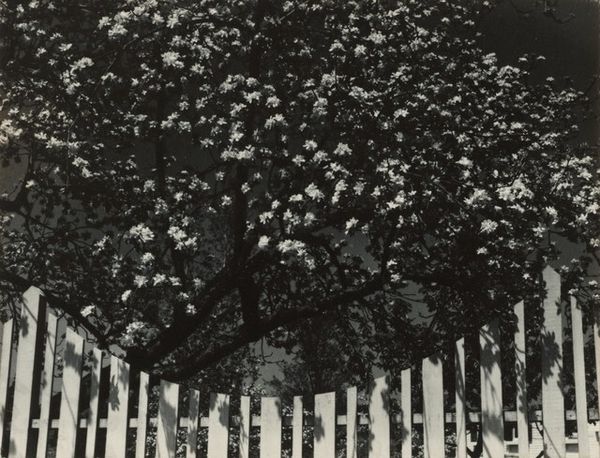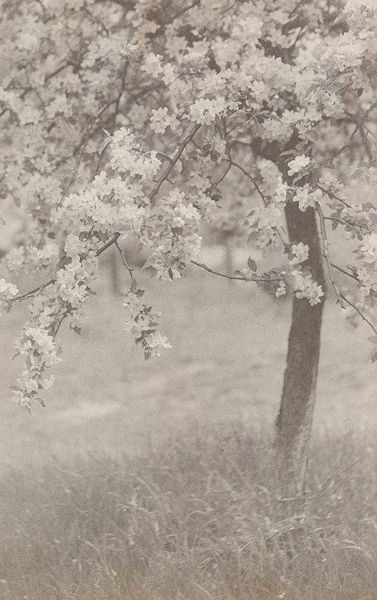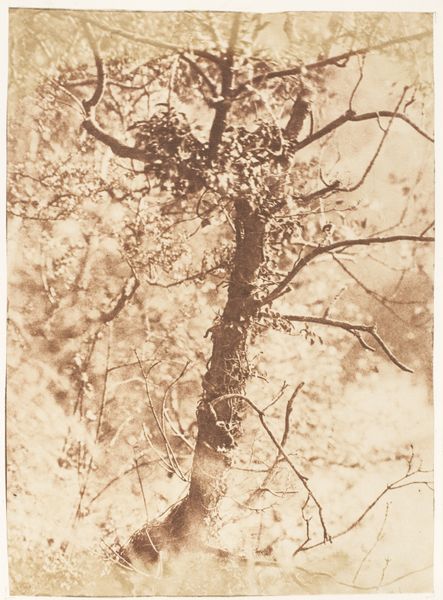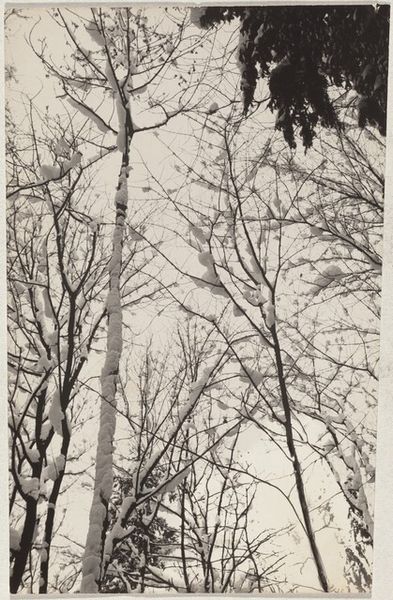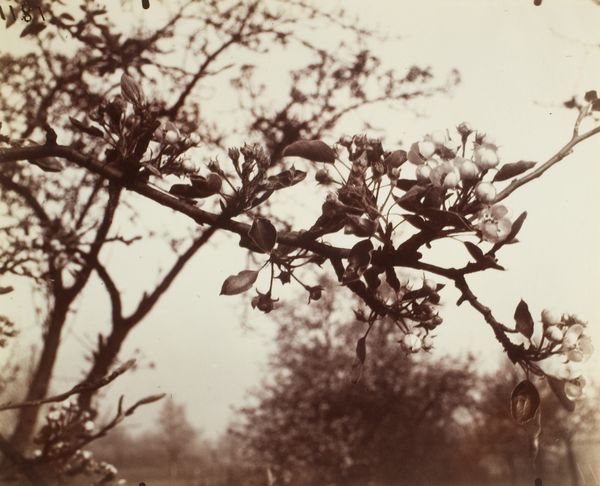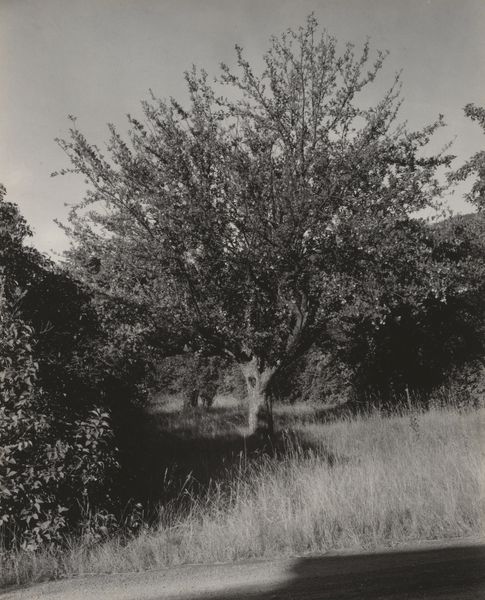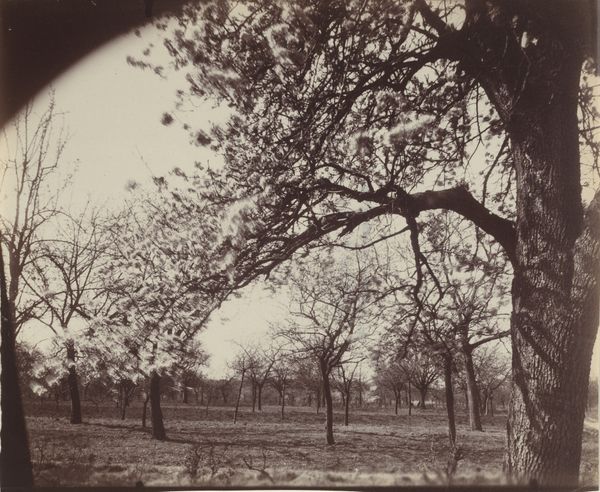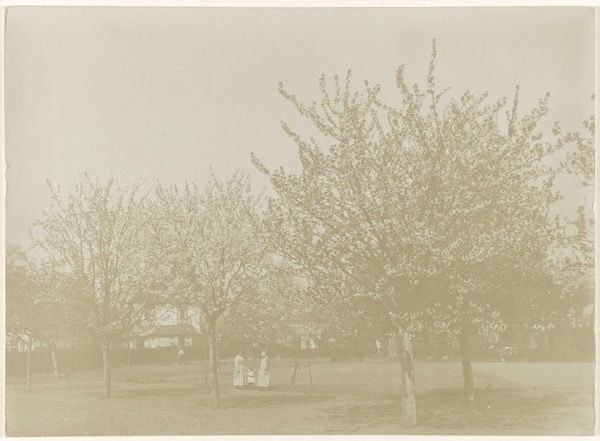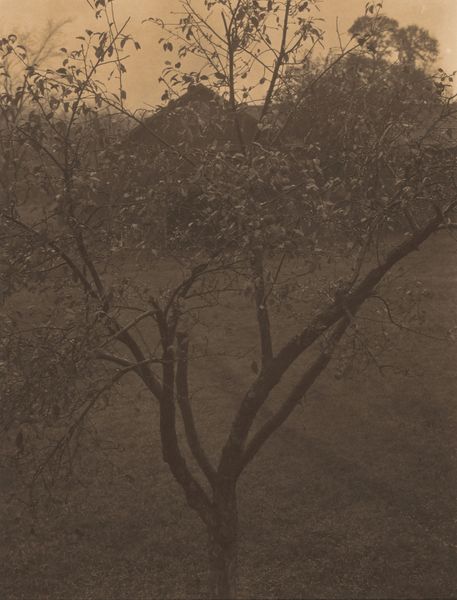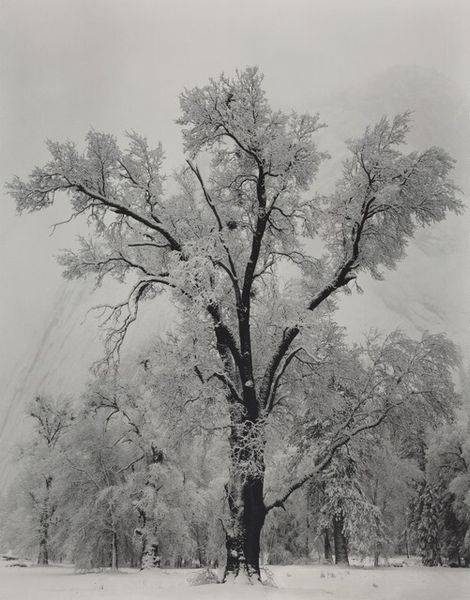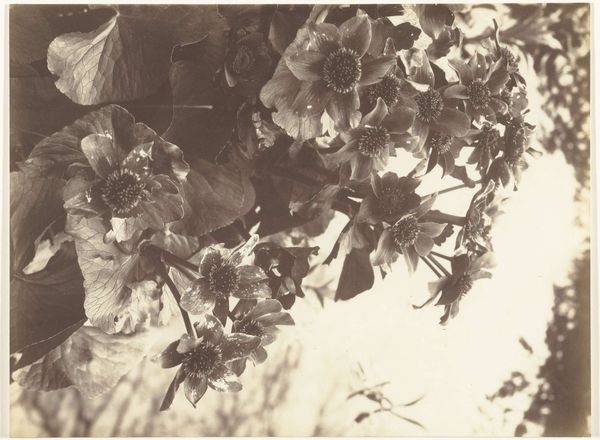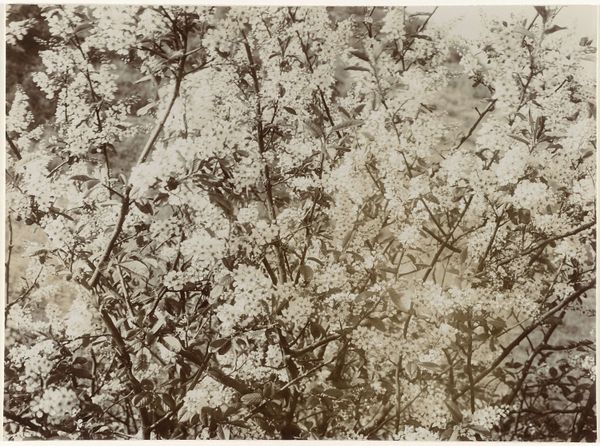
photography
#
black and white photography
#
pictorialism
#
landscape
#
photography
#
black and white
#
monochrome photography
#
monochrome
#
realism
#
monochrome
Dimensions: image: 9 x 6.7 cm (3 9/16 x 2 5/8 in.) sheet: 25.5 x 20.1 cm (10 1/16 x 7 15/16 in.)
Copyright: National Gallery of Art: CC0 1.0
Curator: Dorothy Norman's "Lighthouse, Nobska Point" from 1937. It's a monochrome photograph. Editor: My goodness, it feels like a whispered secret! That lacey, blossomy tree dominating the composition—it almost veils whatever’s beyond that white picket fence. There’s such quiet intimacy in the photograph, like a stolen moment. Curator: It's interesting you say that. Norman, while celebrated for her modernist portraits, frequently returned to landscapes that were, for her, about more than just topographical documentation. Photography for her became intertwined with personal experience, with seeing anew the mundane, almost like an exercise in spiritual perception. Editor: Yes! The soft focus contributes, definitely. It feels like memory, less a clear snapshot and more an impressionistic dream of springtime, filtered through nostalgia. Does that make any sense at all? Curator: Absolutely. This photograph, while fitting into Pictorialism, which privileged aesthetic effect over sharp detail, seems to capture Norman’s search for essence through the lens. The stark contrast of the white fence with the dark branches suggests boundaries, limitations, and then the explosion of flowering as possibilities… and transcendence. Considering that Norman later dedicated herself to supporting socially engaged art, especially that of her close friend Alfred Stieglitz, maybe we can consider this one an intimate reflection about what art represents within larger sociopolitical contexts? Editor: I love that idea, especially considering Stieglitz’s emphasis on “equivalents"—images standing in for interior states. Maybe she’s exploring her place in the world, finding hope bursting through familiar borders. All in something that could seem, on the surface, like a humble suburban scene. Curator: Precisely. Even within these seemingly peaceful pastoral landscapes, questions about societal borders and divisions become increasingly visible through the contrast of organic matter and man-made architecture... Editor: It really makes you wonder what sort of unseen light she chased. What did Norman see on her daily walks that the rest of us just breezed past, oblivious? Curator: I like to think she captured things ordinary and eternal. Editor: Exactly. Spring’s tender refusal to stay confined.
Comments
No comments
Be the first to comment and join the conversation on the ultimate creative platform.
